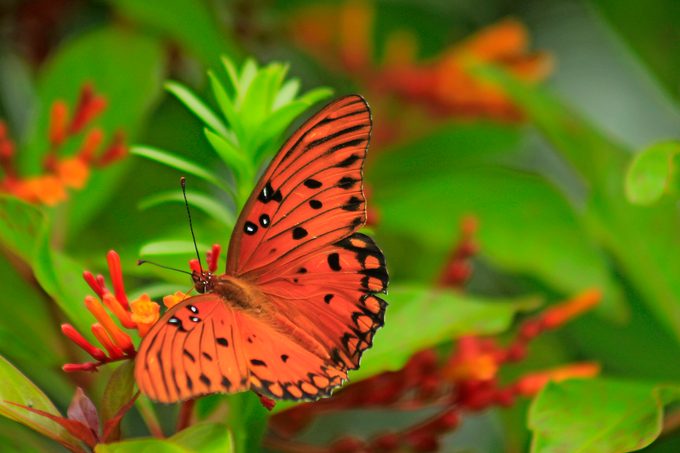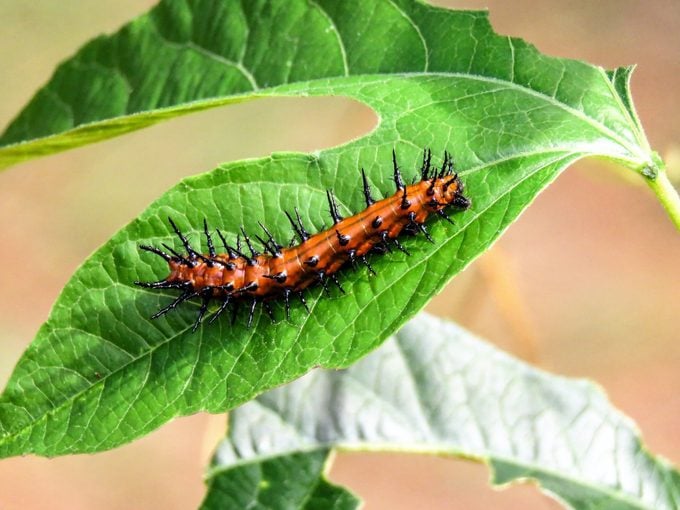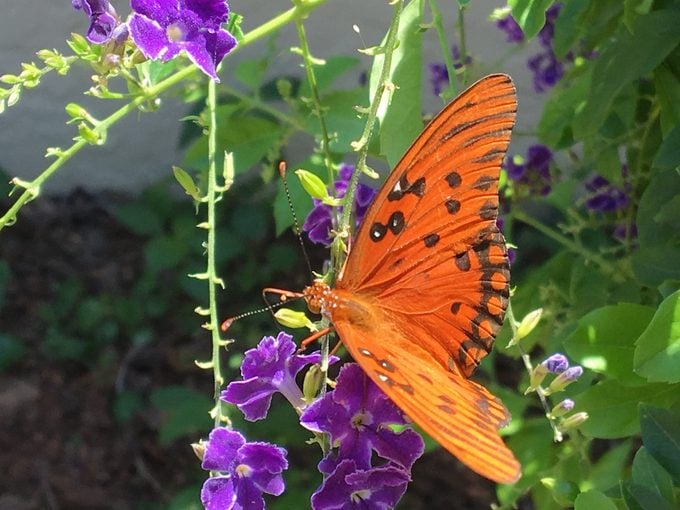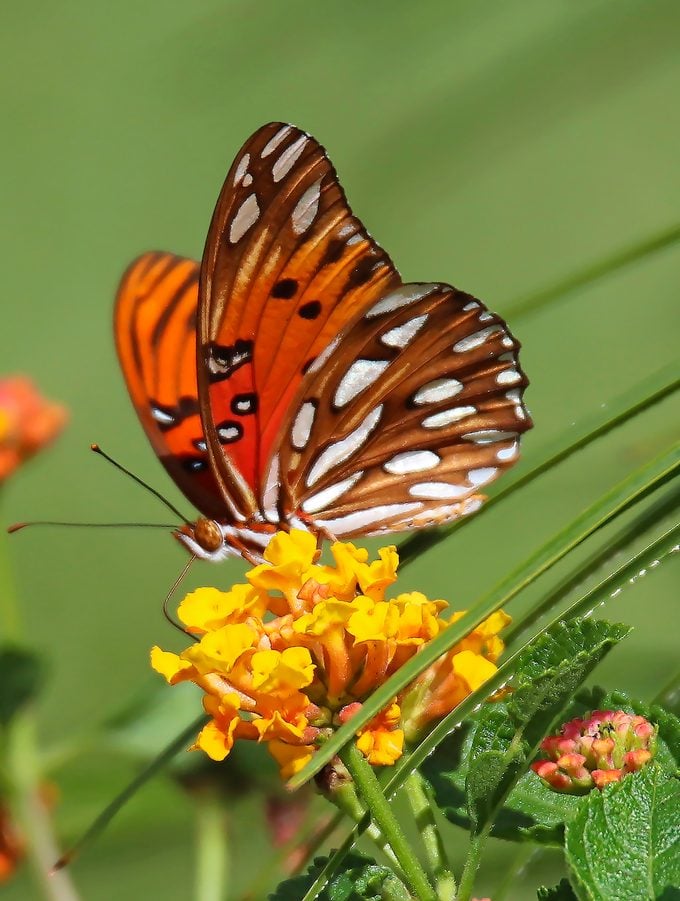Attract Gulf Fritillary Butterflies With Their Favorite Plants
Updated: Apr. 28, 2023
This orange-winged flier is a southern favorite. Discover how you can attract Gulf fritillary butterflies and provide for their caterpillars.
Whether you live in or are visiting the southern U.S., keep your eyes peeled for gorgeous a Gulf fritillary butterfly. And if you’re cultivating an outdoor space to benefit pollinators, think about adding their favorite host plant or a few nectar flowers they’ll love to visit.
Meet the gorgeous great spangled fritillary butterfly.
What Does a Gulf Fritillary Butterfly Look Like?

The best way to identify an adult Gulf fritillary butterfly is to look for bright orange wings that stretch between 2 1/2 to 3 3/4 inches. From above, there are black markings on the upper side and three white dots surrounded by black on the edge of the forewings. On the underside of the wings, there are long silver, iridescent spots.
Reader Tammy Peterson of Largo, Florida, notes that the markings stood out to her in person. She says, “I took this photo (above) at the Florida Botanical Gardens in Largo, Florida. The butterfly’s orange-and-black markings contrast significantly with the green foliage in the background.”
Watch for the white peacock butterfly in the South.
What Does a Gulf Fritillary Caterpillar Look Like?

Gulf fritillaries start their lives in bright yellow eggs at first, which then become transparent as the caterpillar grows inside.
A mature caterpillar has a bright orange body and is covered in black spikes.
Meet 8 crazy cool caterpillars you could find in your backyard.
Gulf Fritillary Range and Habitat

These butterflies have a large range and can be spotted anywhere from the southern U.S. through South America. They’re often found along roadsides or in fields, open woodlands, pastures, city gardens and parks.
Discover fascinating monarch butterfly facts.
How to Attract Gulf Fritillary Butterflies

If you want to support these butterflies, one easy way is to plant flowers they’ll visit. It’s not uncommon to see them visiting lantana, various asters, verbena and tickseed.
Reader Becky Litke of Panama City, Florida had luck attracting this butterfly (above) and other pollinators with the orange-and-yellow blooms of the lantana bushes in her front yard.

You can also grow their favorite host plant: passionflower. The caterpillars love a variety of passionflower vines, including purple passionflower (Passiflora incarnata), yellow passionflower (P. lutea) and corksystem passionflower (P. suberosa).
Next, check out 6 common swallowtail butterflies you should know.




















